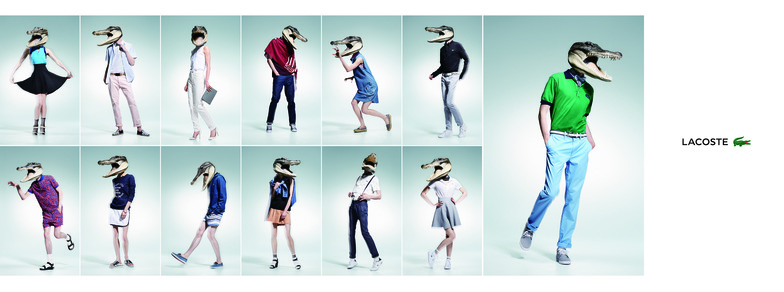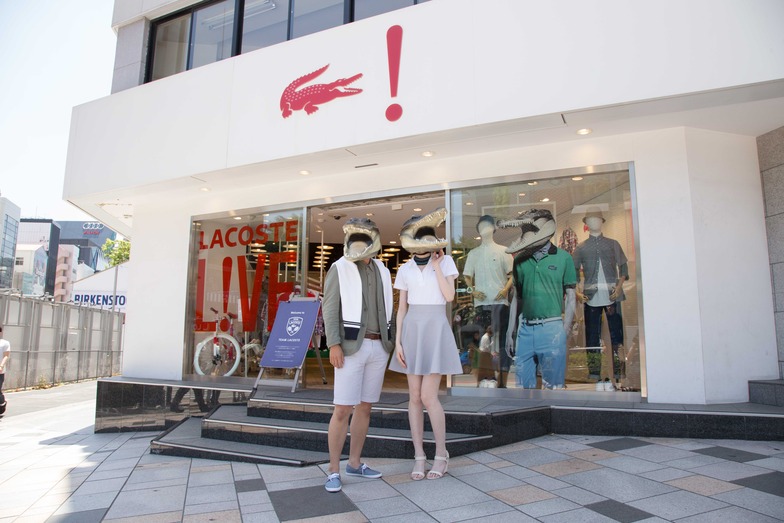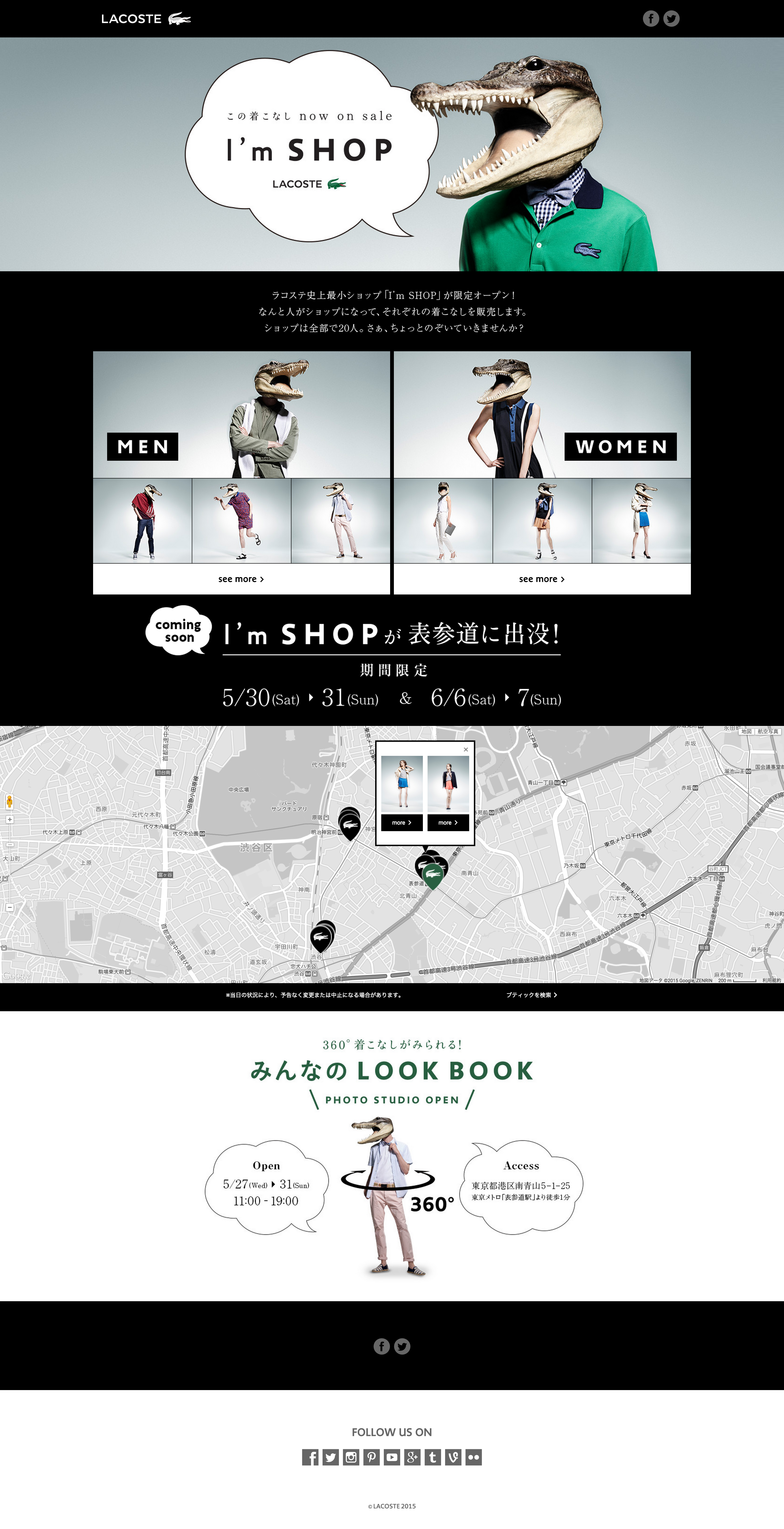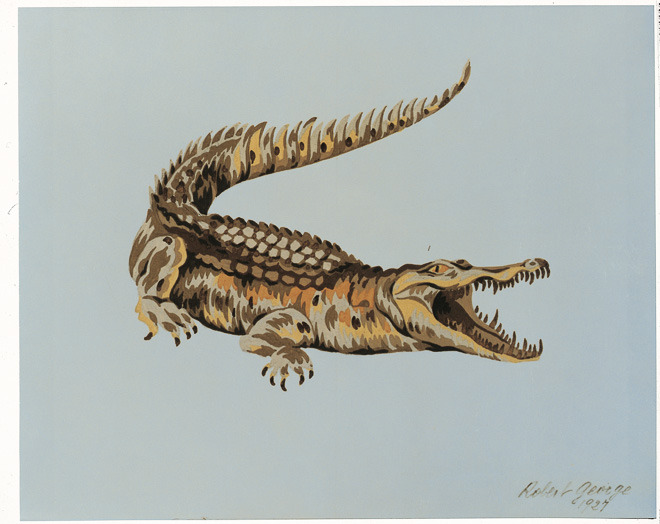Lacoste, the historic global brand originating in France. Its Spring/Summer 2015 campaign involved re-examining past approaches and exploring new strategies.
Mr. Ono from Dentsu Inc. 1CRP Bureau, who directed the campaign, shares an overview of these experiential initiatives and the approach to no-line communication evident within them.
Edited and Compiled by: Aki Kanahara, Dentsu Inc. Event & Space Design Bureau
Is Lacoste cool? Or not cool?
Lacoste is a historic brand born in France in 1933. Did you know the crocodile logo originates from founder René Lacoste's tenacious playing style as a tennis player, reminiscent of a crocodile?
In Japan, some might think of it as clothing for sports like golf or tennis, or as uncool clothes worn by older men. But actually, among young people, it's popular as a premium brand they buy to stretch their budget a little.
Whether you have a positive image of Lacoste might actually be a good indicator of how youthful your sensibilities are (lol).
That insight was the inspiration for this campaign.
Older guys tend to think Lacoste = polo shirts, meaning simple, conservative, and strictly sportswear. But the young people who support it see Lacoste as something you can wear casually, something that lets you play around with your look. They "play" with Lacoste's "wearability." This is precisely where Lacoste has the potential to be loved by even more people.
This hypothesis, arrived at by intensely studying how young people on the street wear it, became the starting point for the campaign. From there, it was just a matter of relentlessly planning how to showcase the styling, how to play with it, and how to make it a talking point.
Ideas that are Lacoste-like, yet not quite Lacoste-like
Our initial decision was to aim for ideas that were both Lacoste-like and un-Lacoste-like—or more precisely, fashion-like yet un-fashion-like.
A major brand like Lacoste targets not only the highly fashion-conscious but also everyone else. In fact, that's the majority. They don't actively seek out fashion information. That's precisely why an approach that deviates from the fashion context, spreading through publicity or buzz even to those who don't normally engage with fashion information, is crucial.
However, it's not simply about spreading widely. If it doesn't solve a problem, there's no point in investing. If the execution isn't distinctly Lacoste, or if it's an idea anyone could do, it defeats the purpose. We needed an idea that solved this dilemma.
To realize a new initiative that feels un-Lacoste-like, but in a way that is distinctly Lacoste.
Born from this trial and error is the I’m SHOP campaign.
The I'm SHOP campaign is an initiative where crocodile models become human-shaped, mobile shops selling their own outfits. They go out into the city, and people who encounter a crocodile model can buy their entire look right then and there.

Alligator models embodying "playful styling."

I'm SHOP, where you can buy entire outfits, roams around Omotesando and Harajuku.

We've also launched a linked e-commerce site.

We also created an interactive catalog where you can view outfits from all angles, developed with the help of the general public.
By preparing various sub-angles around the core idea, we increased the contexts that media outlets and consumers with different interests would want to cover and talk about. This resulted in securing PR exposure across over 150 media outlets, including web and TV. It also became a major topic on social media, leading to a reach exceeding 5 million people.
Non-Line Communication Prioritizes Strategy Over Virality
Lately, we see many campaigns that seem to adopt the attitude that simply becoming a hot topic is enough. Furthermore, there are countless projects that disregard brand identity, being interesting but ultimately interchangeable regardless of the advertiser.
However, becoming a talking point is a means, not an end. Only when a clear objective is set and a strategy exists to achieve it does non-linear communication truly function. That's what I believe.
Achieving unprecedented, "unlike" initiatives in a way that feels "true" to the brand is a strategic undertaking that is truly difficult to execute. However, Lacoste's understanding this time has given me confidence. I hope to continue pursuing this with conviction.
Next time, we'll have a three-way conversation with Lacoste Japan's Mr. Takeuchi, Mr. Fujita from the Event & Space Design Bureau who helped bring this to fruition, and myself.








